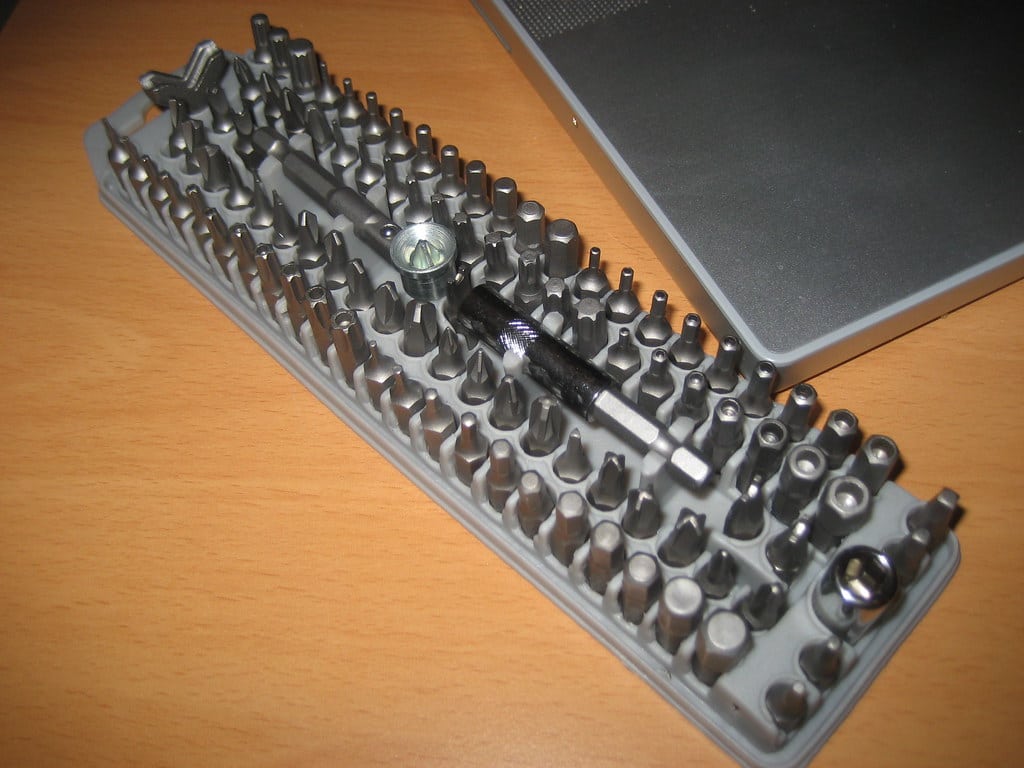
Dive into the toolbox of history and you’ll find that the story of hex driver bits is an intriguing one. These vital components have played a pivotal role in the world of assembly and repair since their creation.
The Birth of the Hex Design
The hexagonal design was first introduced by the Allen Manufacturing Company in the early 20th century in Hartford, Connecticut. In 1910, the company patented a safety screw design with a hexagonal recess. The product was marketed under the name ‘Allen Safety Set Screw,’ and its accompanying tool was what we now know as the Allen wrench or hex key. The goal was to create a screw that could withstand higher torque levels without damaging the screw head.
The Evolution into Hex Drill Bits
As technology and manufacturing techniques advanced, so did the need for tools that could keep up with the increasing pace and efficiency demands. Manual hex keys served well for many years, but as power drills came into widespread use, the concept of hex drill bits was a natural progression.
Hex drill bits could be used with power drills to deliver higher torque levels more quickly and efficiently. These bits retained the advantages of the original hex design but could be used in power tools to speed up assembly and disassembly tasks.
Hex Bits in the Age of Power Tools
With the advent of power tools, hex bits became a crucial component in every handyman’s kit. The original hex design proved ideal for this new era. The six-sided design allowed for maximum contact with screw heads, reducing the risk of stripping while allowing higher torque transfer.
In the realm of modern manufacturing and construction, hex screws (and thus hex bits) are becoming more common due to their high torque capability and lower risk of stripping. This is especially true in fields like automotive and aerospace engineering, where the durability of every component is paramount.
Hex drill bits found their use in a plethora of applications. From assembling furniture to intricate mechanical work, these bits, with their ability to handle power, precision, and high torque, proved indispensable.
The Contemporary Role of Hex Bits
Today, hex bits are more relevant than ever. In an age where DIY projects and home improvements are on the rise, these tools are pivotal for both professionals and hobbyists. With ongoing technological advancements, hex drill bits have evolved, too, with features such as magnetic tips and quick-change shanks making them even more user-friendly and efficient.
The hex driver bits have stood the test of time, proving that great design and functionality never go out of style. They continue to drive the fasteners of progress, tightening the screws of the future, while reminding us of an industrial past.
In essence, the journey of hex driver bits from a simple hand tool accessory to an indispensable part of powered assemblies is a testament to the timeless utility of the hexagonal design. With a bright future ahead, hex drill bits remain a symbol of the perfect marriage between form, function, and innovation.
The History of Hex Drill Bits
For the uninitiated, a casual glance inside a toolbox may reveal an array of tools and accessories that might seem somewhat cryptic. Among them, hex bits often raise the question, “What’s the point of hex bits?” These six-sided wonders are unsung heroes in a world of screws and bolts, deserving of recognition and understanding.
Hex bits, also known as hexagon screwdriver bits, are a type of screwdriver bit that features a hexagonal (six-sided) tip. They’re designed to fit into hex screw heads, which, unlike regular screw heads, have a hexagonal recess. This design serves multiple purposes. It provides a larger surface contact area between the bit and the screw, ensuring a tight fit and minimizing the risk of the screw head getting stripped. This makes hex bits a go-to for tasks that require high torque.
The Versatility of Hex Bits
One of the key features that make hex bits a toolbox essential is their versatility. They’re used in a wide range of applications, from assembling furniture and bicycles to automotive repairs and heavy machinery maintenance. Their design allows them to exert high torque without damaging the screw head, which is critical in many professional applications.
Furthermore, hex bits come in a variety of sizes to match different hex screw sizes, increasing their versatility. Whether it’s a tiny screw in a delicate electronic device or a large bolt in a piece of industrial machinery, there’s a hex bit suitable for the task.
The Advantage of the Hex
The design of hex bits provides a significant advantage when it comes to applying torque, or rotational force. Unlike other types of bits, the hexagonal shape of the bit tip ensures that the force is distributed evenly across all six sides, allowing for more efficient transmission of torque. This reduces the likelihood of the screw head getting damaged, even when considerable force is applied.
The humble hex bit is a cornerstone in the world of tooling, and its function extends far beyond its simple, six-sided design. It embodies a perfect blend of strength, precision, and versatility, capable of standing up to the demands of a wide range of tasks. So, the next time you come across a hex bit in a toolbox, you’ll know just how crucial this small tool is.
